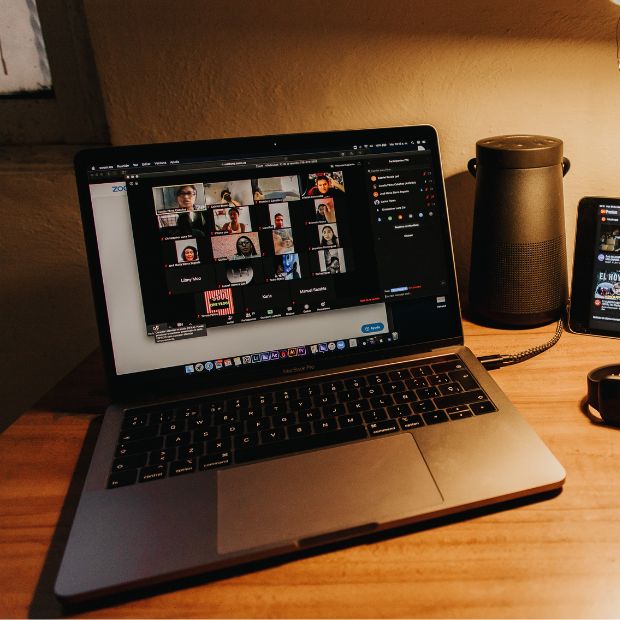
Remote is in vogue. According to a recent Gallup survey, 8 in 10 people are now working in a hybrid or remote mode.
There are so many advantages to letting employees out into the wild to work from wherever they are. Two of the most obvious reasons are lower operational expenses and the ability to source skilled workers on a global scale. But what about assessing your employees’ performance? How can you ensure that your remote workers meet or even exceed expectations? That’s where performance management for remote workers comes in. By setting clear goals and objectives, establishing workflow, providing regular feedback, and tracking progress over time, you can ensure that your team stays on track no matter where they’re located.

Performance Management for Remote Workers:
1. Set Clear Expectations Right from the Start
Let your employees know what you expect from them in terms of work output and strict observance of deadlines from Day 1. This will help avoid any confusion or misunderstanding later on. Scott Bales, vice president of delivery and solution engineering at Replicon, a time management system provider based in the San Francisco Bay Area, says: “Providing guidelines, setting boundaries, and reviewing the basics are among the most important steps to take when setting out on your project. There will be questions; be accessible and provide clarity on priorities, milestones, performance goals, and more. Outline each team member’s availability and ensure you can reach them when needed.” Just like in any normal workplace, managers should keep workers up-to-date on policy and staffing changes, company successes and setbacks, and other general developments. They should likewise offer helpful tips for working at home.
2. Communicate With Them Regularly
Touch base with your team members frequently, whether it be through email, video chat, or phone calls. Constant communication is an essential lifeline for remote employees. The feeling of isolation from the workplace or operating in a vacuum can lead to disengagement and burnout. However, workplace communication between managers and employees has to have a purpose and be constructive. If it’s not, employees will feel like they’re being micromanaged.
3. Establish Mutual Trust
Since you don’t see your employees in person daily, you must build up trust with them. One key to great relationships is to assume good intentions. Of course, you may be wrong sometimes, but when you believe someone’s heart is in the right place, you’ll act more positively toward them. Positivity begets positivity and is beneficial to relationships, whether personal or professional.
4. Be Consistent and Predictable
People crave certainty and classic leadership studies have shown team members would choose a predictable, yet badly behaved boss over an unpredictable one. Consistency in fundamental things is another hallmark of a true leader. While you need to be dynamic and innovative to get ahead of the competition, you should not compromise the basics. Demonstrate good behavior, but also be predictable. If they can always count on you in small and large things, they will trust and respect you more. You can also do this by being clear in your communications, following through on promises made, and respecting their time and space.

5. Use Technology to Stay Connected
Some of many available tools or applications canhelp managers stay sharp and connected with their remote teams. It includes Slack, Zoom, and Google Hangouts. It is important to take a proactive approach to stay connected with colleagues. Whether your team is entirely virtual or embracing hybrid work, these strategies will help sustain the work culture. Use these platforms to hold virtual meetings, share files, or collaborate on projects. It’s crucial to set clear expectations, communicate regularly, and establish trust when managing remote workers.
Measuring the Performance of Remote Teams
As the manager of a remote team, you need to have systems in place to measure the performance of your employees. This can include tracking metrics, such as productivity levels, project completion rates, customer satisfaction ratings, or other KPIs relevant to your organization. It is also important in performance management for remote workers that you provide regular feedback to ensure that your team members are on track and meeting expectations. There are several key indicators that you can use to measure the performance of your remote team:
1. Productivity Levels
One way to gauge employees’ productivity is by monitoring how much work they complete within a certain timeframe. This could involve setting targets for each member of your staff and then measuring whether these targets are being met consistently. If not, it may be necessary to investigate why this might be the case. For example, are there any bottleneck areas that prevent work from getting done? Is there something about the working environment that isn’t conducive to efficient productive output?
2. Project Completion Rates
Another metric worth paying attention to is how quickly and satisfactorily your workers complete projects from start to finish. If timelines are slipping or deadlines aren’t being met, this could suggest underlying issues with either individual workers or wider processes systems within the company. In such cases, managers need to raise concerns with their teams about their job performance and get to the root of any problems so they can rectify them ASAP.

3. Customer Satisfaction Ratings
Finally, it’s also important to consider how customers or clients perceive the quality of work being done by remote teams. Are they happy with the finished products they receive, or do they often find faults in them? Are they satisfied with your compliance with the agreed timeline, or do they think you and your team should improve in this area? These factors will play a critical role in determining whether your business is functioning at its best. So do not neglect them. If you monitor these three key areas, you’ll have an excellent overview of how your team is performing and where there might be room for improvement. Managers of remote teams should track productivity levels, project completion rates, and customer satisfaction ratings to gauge each employee’s performance.

Best Practices for Evaluating the Performance of Remote Employees
As more and more companies allow their employees to work remotely, it’s crucial to implement an evaluation system to determine if those working at home or anywhere else as digital nomads are performing well in their jobs. After all, when you can’t see someone working in person, it’s difficult to tell if they’re getting anything done.
There are a few key things you can do to make sure you’re fairly assessing your remote team members:
1. Address Underperforming Employees
It is easier to see the actions of underperforming employees when they’re working onsite. It’s obvious when a person misses a deadline or is not on his desk. For some underperforming employees, the distractions of working from home can intensify their tendency to procrastinate. Addressing poor performance takes up to 17% of a manager’s time and focus. Starting the conversation with empathy puts the focus on the fault that needs attention and not on the person on an individual level.
This way, you can thresh out together the problem.
- Consider what might be different for the employee that is hindering their success.
- Ask the employee, “What would you change if you could?”
- Find out what the company can do to help the employee improve their performance.
Official performance improvement plans (PIPs) are not only for office settings. When check-ins and a mid-year performance assessment have not motivated underperforming employees to step up, PIPs may be necessary.
2. Personalize the Conversation
Gallup Research finds frequent conversations yield the biggest improvements in engagement. The study reports that “remote workers are three times more likely to be engaged if they receive feedback from their manager at least a few times per month.” The quality of the interaction is as important as the frequency. Set up weekly check-ins via video chat phone call, or whatever medium works best for both parties involved. While it is more convenient to address the whole team at once, it pays to talk to them one-on-one now and then.
3. Use Data-Driven Metrics Whenever Possible
Whether it’s sales numbers or website traffic statistics, hard data doesn’t lie. If a worker’s performance isn’t measured, it becomes very difficult (if not impossible) to assess their progress and how it affects the team’s overall production. With hard data on hand, you can accurately point out the areas where a worker excels or lags.

4. Create a Supportive and Collaborative Environment
If you want remote employees to feel comfortable giving feedback or suggestions, they mustn’t feel like their ideas will be shot down without being given a fair chance. This type of atmosphere can be fostered by making sure everyone feels heard and valued. It will give them the impression that you encourage open communication and consider new perspectives. By following these best practices, you can ensure that you’re fairly evaluating the performance of your remote team members – no matter where they are in the world! Clear expectations, frequent communication, and data-driven metrics are key to fairly assessing remote employees’ performance.
Motivating and Engaging Remote Teams
As more and more employees work remotely, you ought to implement processes to keep them motivated and take care of their wellness needs. It can be a challenge to manage a remote team, but some tips can help:
- Encourage team building and socializing, even if it’s online.
- Make sure everyone feels like they’re part of the team by staying in communication regularly.
- Celebrate successes together, big or small.
- Set clear goals and objectives for each member of the team, and provide feedback often.
If you manage remote workers, encourage team building and socializing to keep everyone motivated and engaged.

FAQs on Performance Management for Remote Workers:
1. How do you track the performance of remote employees?
There are a few effective ways to track the performance of remote employees:
- Efficient communication – Make sure you have regular check-ins with your team, and that everyone is on the same page regarding deadlines, expectations, etc. Open communication will help avoid misunderstandings and ensure that everyone is aware of what needs to be done.
- Using tracking tools – Use project management software or other tracking tools to keep tabs on deadlines, assigned tasks, and progress made. This way you can see at a glance who is falling behind or excelling in their work.
- Getting input from coworkers – Ask for feedback from your team regularly so you can address any issues early on and correct them as needed.
- Conducting performance reviews – Set up periodic performance reviews to go over goals, progress made, and areas of improvement. This will help you identify any patterns or issues with employee performance so you can address them accordingly.
- Setting clear expectations – Perhaps the most important thing you can do to ensure that your remote team is performing well is to tell them what you expect from them right at the start. Make sure everyone knows what is expected of them and what success looks like, so there are no surprises down the road.
2. What are the best ways to manage remote workers?
- Define and Document Expectations
- Set Up Regular Check-Ins
- Encourage Transparency and Communication
- Support Their Need for Independence
- Trust Them Implicitly
- Keep an Open Mind
- Foster a Sense of Community
- Promote Collaboration
- Celebrate Successes
3. How can remote team performance be improved?
- Ensure that your team members have the resources they need to be productive. It includes access to reliable internet service and necessary software. For example, I gave my virtual assistant access to a ProWritingAid Premium account to streamline the writing and editing tasks I’ve been assigning to her.
- Establish an open line of communication. Team members should feel comfortable communicating with their manager and each other regularly.
- Managers should state what they expect from each team member in terms of quality and quantity of work. These expectations should be communicated regularly, preferably through weekly or bi-weekly check-ins via video call or phone conversation.
- Managers should provide frequent feedback (ideally through weekly check-ins) so team members know how they are doing and where they can improve in the future.
The feedback needs to be both positive and constructive for it to be most effective.
Conclusion
Overall, performance management for remote workers can be extremely beneficial. By setting clear goals and objectives, providing feedback regularly, and tracking progress over time, you can help your team stay on track and achieve your business goals, no matter where they’re located. So if you’re considering switching to a remote work model, don’t forget to put a performance management system in place. Next up, you may want to explore a guide on how to manage your finances as a writer.
Hey there, welcome to my blog! I'm a full-time entrepreneur building two companies, a digital marketer, and a content creator with 10+ years of experience. I started RafalReyzer.com to provide you with great tools and strategies you can use to become a proficient digital marketer and achieve freedom through online creativity. My site is a one-stop shop for digital marketers, and content enthusiasts who want to be independent, earn more money, and create beautiful things. Explore my journey here, and don't forget to get in touch if you need help with digital marketing.

